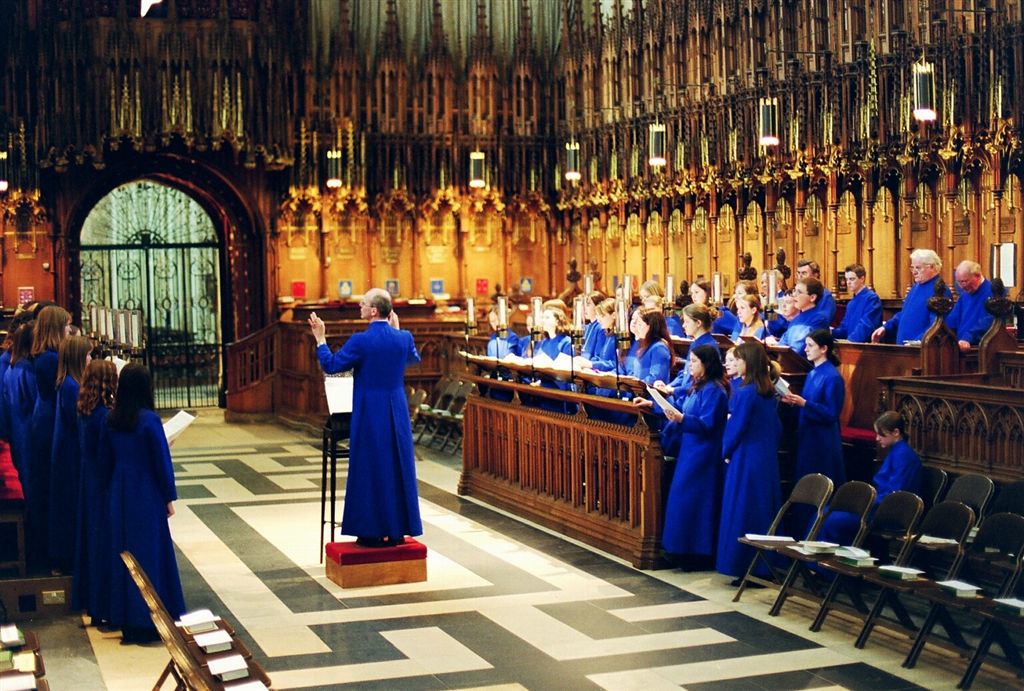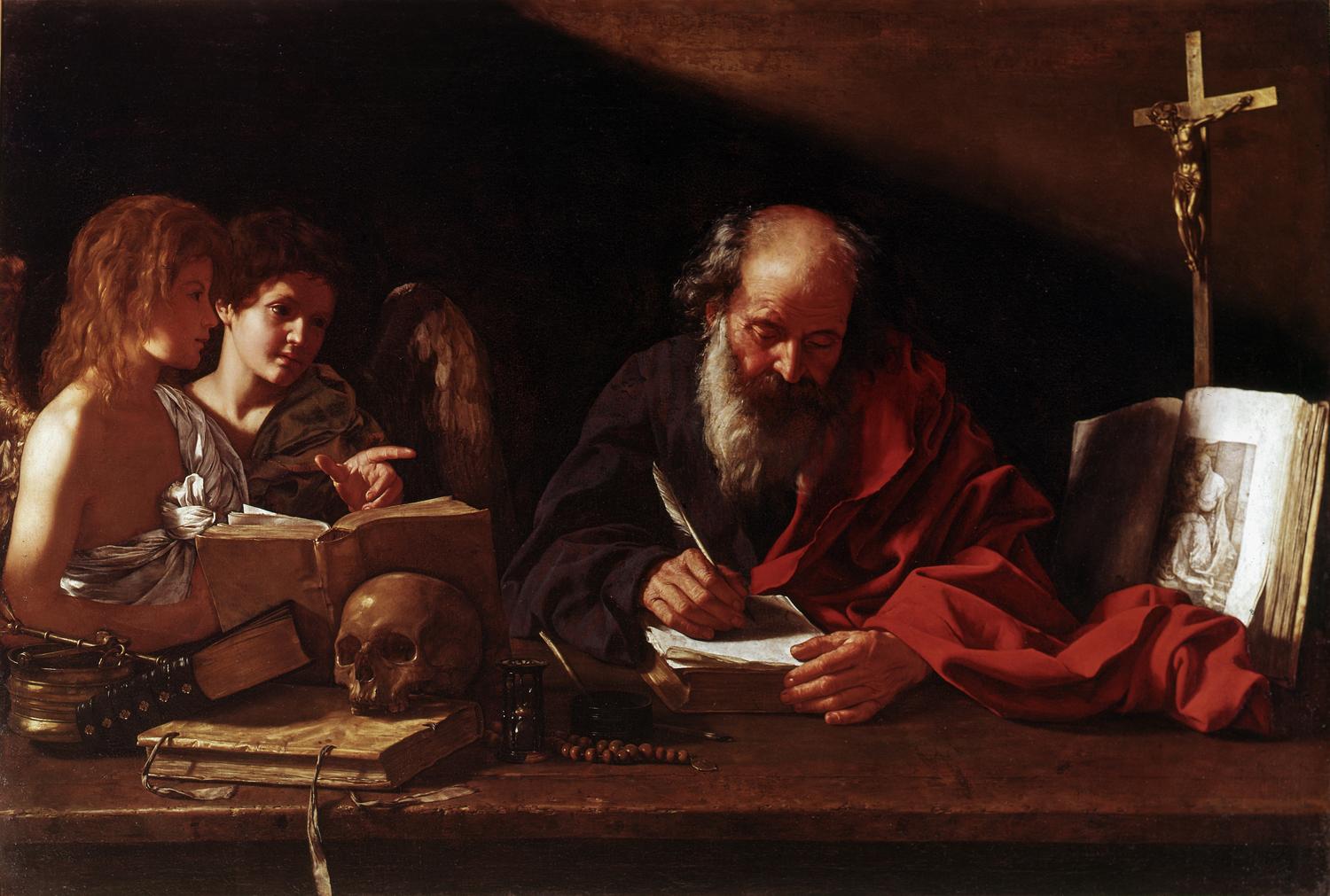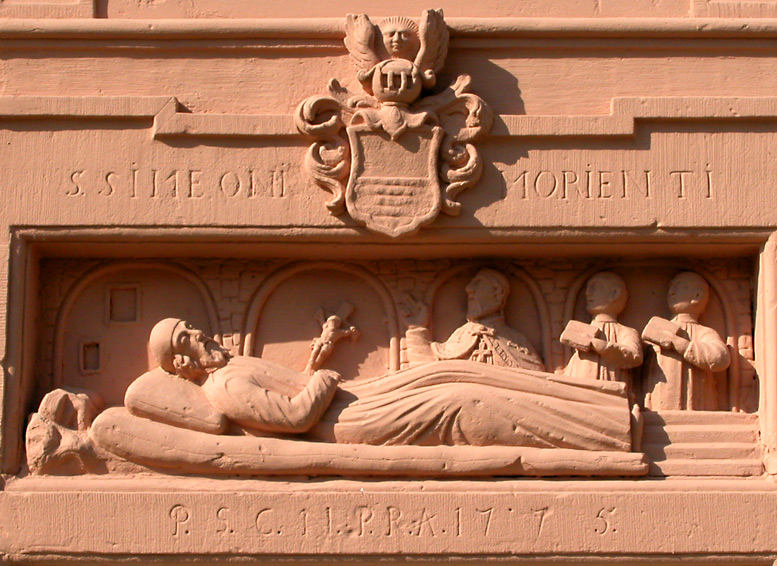|
Simeonstift Of Trier
The St. Simeon’s Collegiate Church erman: ''Simeonstift''was a collegiate church in Trier, Germany, near the Roman city gate of the Porta Nigra atin, “Black Gate” Named after the Greek monk, St. Simeon of Trier, it is now a city museum in the former collegiate church’s buildings under the name, ''Stadtmuseum Simeonstift'' ity Museum of the Simeonstift The church was created in 1037. In 1028 Simeon of Trier settled at the Porta Nigra as a hermit. He was supposed to have walled himself up there at the gate’s east tower. After his death on 1 June 1035, he was buried in his room on the ground floor. In the same year, probably for Christmas, he was canonized by Pope Benedict IX, in one of the first canonizations ever made by a Pope. In honor of the new saint, they built the ''Simeonstift'' and converted the former tower to a ''Doppelkirche'' erman, “twin church” The Archbishop of Trier at that time, Poppo von Babenberg, personally had known the hermit and tr ... [...More Info...] [...Related Items...] OR: [Wikipedia] [Google] [Baidu] |
Trier Museum Simeonstift
Trier ( , ; lb, Tréier ), formerly known in English as Trèves ( ;) and Triers (see also names in other languages), is a city on the banks of the Moselle in Germany. It lies in a valley between low vine-covered hills of red sandstone in the west of the state of Rhineland-Palatinate, near the border with Luxembourg and within the important Moselle wine region. Founded by the Celts in the late 4th century BC as ''Treuorum'' and conquered 300 years later by the Romans, who renamed it ''Augusta Treverorum'' ("The City of Augustus among the Treveri"), Trier is considered Germany's oldest city. It is also the oldest seat of a bishop north of the Alps. Trier was one of the four capitals of the Roman Empire during the Tetrarchy period in the late 3rd and early 4th centuries. In the Middle Ages, the archbishop-elector of Trier was an important prince of the Church who controlled land from the French border to the Rhine. The archbishop-elector of Trier also had great signific ... [...More Info...] [...Related Items...] OR: [Wikipedia] [Google] [Baidu] |
Pope Benedict IX
Pope Benedict IX ( la, Benedictus IX; c. 1012 – c. 1056), born Theophylactus of Tusculum in Rome, was the bishop of Rome and ruler of the Papal States on three occasions between October 1032 and July 1048. Aged approximately 20 at his first election, he is one of the youngest popes in history. He is the only man to have been Pope on more than one occasion and the only man ever to have sold the papacy. He was the nephew of his immediate predecessor, John XIX. In October 1032, Benedict's father obtained his election through bribery. However, his reputed dissolute activities provoked a revolt on the part of the Romans. Benedict was driven out of Rome and Sylvester III elected to succeed him. Some months later, Benedict and his supporters managed to expel Sylvester. Benedict then decided to resign in favor of his godfather, Gregory VI, provided he was reimbursed for his expenses. Benedict subsequently had second thoughts and returned, and attempted to depose Gregory VI. A number o ... [...More Info...] [...Related Items...] OR: [Wikipedia] [Google] [Baidu] |
Buildings And Structures In Trier
A building, or edifice, is an enclosed structure with a roof and walls standing more or less permanently in one place, such as a house or factory (although there's also portable buildings). Buildings come in a variety of sizes, shapes, and functions, and have been adapted throughout history for a wide number of factors, from building materials available, to weather conditions, land prices, ground conditions, specific uses, prestige, and aesthetic reasons. To better understand the term ''building'' compare the list of nonbuilding structures. Buildings serve several societal needs – primarily as shelter from weather, security, living space, privacy, to store belongings, and to comfortably live and work. A building as a shelter represents a physical division of the human habitat (a place of comfort and safety) and the ''outside'' (a place that at times may be harsh and harmful). Ever since the first cave paintings, buildings have also become objects or canvasses of much artisti ... [...More Info...] [...Related Items...] OR: [Wikipedia] [Google] [Baidu] |
Choir
A choir ( ; also known as a chorale or chorus) is a musical ensemble of singers. Choral music, in turn, is the music written specifically for such an ensemble to perform. Choirs may perform music from the classical music repertoire, which spans from the medieval era to the present, or popular music repertoire. Most choirs are led by a conductor, who leads the performances with arm, hand, and facial gestures. The term ''choir'' is very often applied to groups affiliated with a church (whether or not they actually occupy the quire), whereas a ''chorus'' performs in theatres or concert halls, but this distinction is not rigid. Choirs may sing without instruments, or accompanied by a piano, pipe organ, a small ensemble, or an orchestra. A choir can be a subset of an ensemble; thus one speaks of the "woodwind choir" of an orchestra, or different "choirs" of voices or instruments in a polychoral composition. In typical 18th century to 21st century oratorios and masses, 'ch ... [...More Info...] [...Related Items...] OR: [Wikipedia] [Google] [Baidu] |
Napoleon
Napoleon Bonaparte ; it, Napoleone Bonaparte, ; co, Napulione Buonaparte. (born Napoleone Buonaparte; 15 August 1769 – 5 May 1821), later known by his regnal name Napoleon I, was a French military commander and political leader who rose to prominence during the French Revolution and led successful campaigns during the Revolutionary Wars. He was the ''de facto'' leader of the French Republic as First Consul from 1799 to 1804, then Emperor of the French from 1804 until 1814 and again in 1815. Napoleon's political and cultural legacy endures to this day, as a highly celebrated and controversial leader. He initiated many liberal reforms that have persisted in society, and is considered one of the greatest military commanders in history. His wars and campaigns are studied by militaries all over the world. Between three and six million civilians and soldiers perished in what became known as the Napoleonic Wars. Napoleon was born on the island of Corsica, not long aft ... [...More Info...] [...Related Items...] OR: [Wikipedia] [Google] [Baidu] |
Henry IV, Holy Roman Emperor
Henry IV (german: Heinrich IV; 11 November 1050 – 7 August 1106) was Holy Roman Emperor from 1084 to 1105, King of Germany from 1054 to 1105, King of Italy and Burgundy from 1056 to 1105, and Duke of Bavaria from 1052 to 1054. He was the son of Henry III, Holy Roman Emperor—the second monarch of the Salian dynasty—and Agnes of Poitou. After his father's death on 5 October 1056, Henry was placed under his mother's guardianship. She made grants to German aristocrats to secure their support. Unlike her late husband, she could not control the election of the popes, thus the idea of the "liberty of the Church" strengthened during her rule. Taking advantage of her weakness, Archbishop Anno II of Cologne kidnapped Henry in April 1062. He administered Germany until Henry came of age in 1065. Henry endeavoured to recover the royal estates that had been lost during his minority. He employed low-ranking officials to carry out his new policies, causing discontent in Saxony a ... [...More Info...] [...Related Items...] OR: [Wikipedia] [Google] [Baidu] |
Simultaneum
A shared church (german: Simultankirche), simultaneum mixtum, a term first coined in 16th-century Germany, is a church in which public worship is conducted by adherents of two or more religious groups. Such churches became common in the German-speaking lands of Europe in the wake of the Protestant Reformation.''Religious Conflict and the Practice of Toleration in Early Modern Europe,'' Harvard University Press, 2007, Chapter 8, pp. 198. ff.. The different Christian denominations (such as Roman Catholic, Lutheran, Reformed, or United, etc.), share the same church building, although they worship at different times and with different clergy. It is thus a form of religious toleration. ''Simultaneum'' as a policy was particularly attractive to rulers who ruled over populations which contained considerable numbers of both Catholics and Protestants. It was often the opposite of '' cuius regio, eius religio'' and used in situations where a ruler was of a different religion than the ... [...More Info...] [...Related Items...] OR: [Wikipedia] [Google] [Baidu] |
Canonization
Canonization is the declaration of a deceased person as an officially recognized saint, specifically, the official act of a Christian communion declaring a person worthy of public veneration and entering their name in the canon catalogue of saints, or authorized list of that communion's recognized saints. Catholic Church Canonization is a papal declaration that the Catholic faithful may venerate a particular deceased member of the church. Popes began making such decrees in the tenth century. Up to that point, the local bishops governed the veneration of holy men and women within their own dioceses; and there may have been, for any particular saint, no formal decree at all. In subsequent centuries, the procedures became increasingly regularized and the Popes began restricting to themselves the right to declare someone a Catholic saint. In contemporary usage, the term is understood to refer to the act by which any Christian church declares that a person who has died is a sain ... [...More Info...] [...Related Items...] OR: [Wikipedia] [Google] [Baidu] |
Hermit
A hermit, also known as an eremite ( adjectival form: hermitic or eremitic) or solitary, is a person who lives in seclusion. Eremitism plays a role in a variety of religions. Description In Christianity, the term was originally applied to a Christian who lives the eremitic life out of a religious conviction, namely the Desert Theology of the Old Testament (i.e., the 40 years wandering in the desert that was meant to bring about a change of heart). In the Christian tradition the eremitic life is an early form of monastic living that preceded the monastic life in the cenobium. In chapter 1, the Rule of St Benedict lists hermits among four kinds of monks. In the Roman Catholic Church, in addition to hermits who are members of religious institutes, the Canon law (canon 603) recognizes also diocesan hermits under the direction of their bishop as members of the consecrated life. The same is true in many parts of the Anglican Communion, including the Episcopal Church in the U ... [...More Info...] [...Related Items...] OR: [Wikipedia] [Google] [Baidu] |
Trier Simeonstrasse 60 1
Trier ( , ; lb, Tréier ), formerly known in English as Trèves ( ;) and Triers (see also names in other languages), is a city on the banks of the Moselle in Germany. It lies in a valley between low vine-covered hills of red sandstone in the west of the state of Rhineland-Palatinate, near the border with Luxembourg and within the important Moselle wine region. Founded by the Celts in the late 4th century BC as ''Treuorum'' and conquered 300 years later by the Romans, who renamed it ''Augusta Treverorum'' ("The City of Augustus among the Treveri"), Trier is considered Germany's oldest city. It is also the oldest seat of a bishop north of the Alps. Trier was one of the four capitals of the Roman Empire during the Tetrarchy period in the late 3rd and early 4th centuries. In the Middle Ages, the archbishop-elector of Trier was an important prince of the Church who controlled land from the French border to the Rhine. The archbishop-elector of Trier also had great signific ... [...More Info...] [...Related Items...] OR: [Wikipedia] [Google] [Baidu] |
Symeon Of Trier
Saint Simeon of Trier (or of Syracuse), also Symeon ( el, Ὁ Ὅσιος Συμεὼν ὁ Πεντάγλωσσος ὁ Σιναΐτης, scn, San Simeuni di Saraùsa), was a monk and recluse who died in Germany in 1035. He is venerated as a saint in the Eastern Orthodox Church with his feast day on May 1, and in the Catholic Church in Germany. Life Simeon was born in the late 10th century in Syracuse, Sicily,Monks of Ramsgate. "Simeon". ''Book of Saints'' 1921. CatholicSaints.Info. 8 November 2017 to a father and a Calabrian mother, during the period of [...More Info...] [...Related Items...] OR: [Wikipedia] [Google] [Baidu] |








.jpg)
